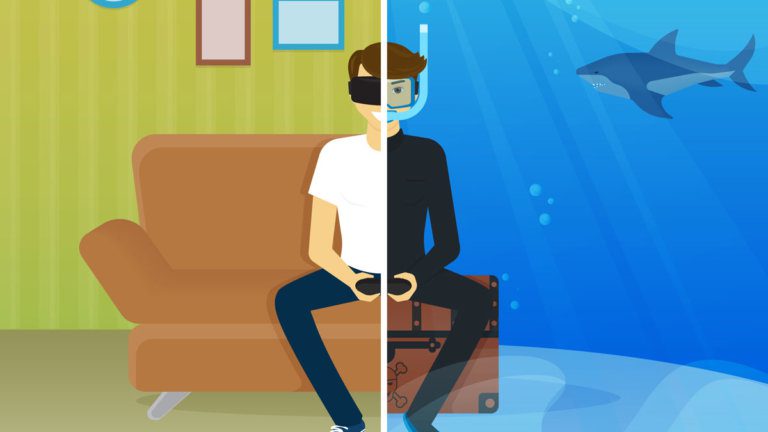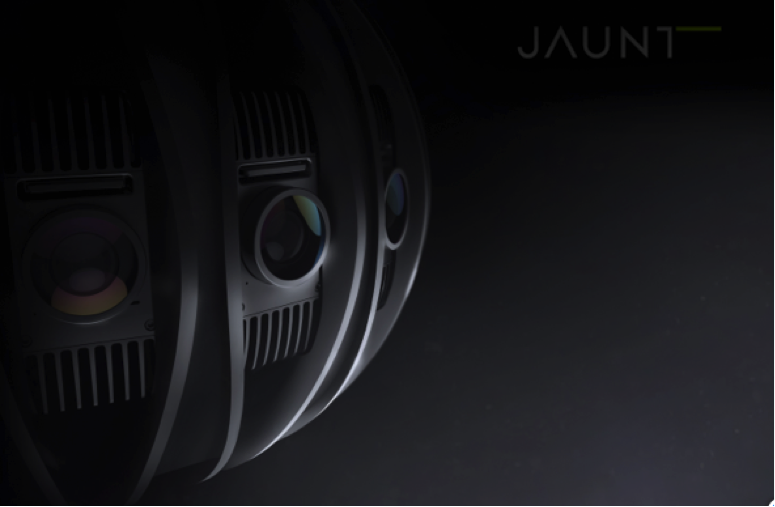Consumer
Who Will Win The Race For Virtual Reality Content?

This is the second of a series of posts on Virtual Reality technology by Steve and others at CableLabs. You can find the first post here.
In the recent study we performed at CableLabs, we asked what would stop people from buying a virtual reality headset. High on the list of items was availability of content. Setting aside VR gaming, people didn’t want to spend money on a device that only had a few (or a few hundred) pieces of content. So there has to be lots. Who is creating content, and how quickly will content show up?
Leave it to the Professionals?
Three companies have emerged as leaders in the space of professional content production:
- JauntVR who just secured another $66M investment
- Immersive Media who worked on the Emmy award-winning Amex Unstaged: Taylor Swift Experience
- NextVR who seemingly wants to become the “Netflix of VR.”
Each company is developing content with top-tier talent, each working to establish brand equity and to develop critical intellectual property. Another thing they have in common is that they have developed their own cameras to capture the content, yet they all say they are not in the business of building cameras.
JauntVR Neo Camera
The new Jaunt Neo camera seems to have 16 sensors around the periphery, which we might expect to yield a 16K x 8K resolution. This is far in excess of what the Samsung GearVR will decode and display (limited to 4K x 2K 30fps, or lower resolution at 60fps), but shows the type of quality experience we might expect for the future. The NextVR camera uses 6 4K RED professional cameras, each of which is a rather expensive proposition before you even buy lenses.
But there seems to be a problem of scaling up. To get to thousands of pieces of professional content we will have to wait for years for the three companies and any other new entrants to scale up their staff, equipment, and get engaged in and produce enough interesting projects.
Or will consumer-generated content win the day?
On the flip side, we have seen the rate at which regular video is created and uploaded to YouTube (300 hours uploaded per minute). All we need is for affordable consumer-grade cameras to show up. The first cameras are already here, though their resolution leaves something to be desired. Brand-name cameras like the Ricoh Theta and the Kodak SP360 are affordable consumer-grade 360° cameras that are around $300, but they only shoot HD video. When the 1920 pixels of the HD video are expanded to fill the full horizon, all that can be seen in the VR headset is less than a quarter of that - or around 380 pixels. Most of the content we used in consumer testing was 4000x2000 pixels of content, and even that showed up as fairly low resolution. There are some some startup names entering the scene (like Bublcam and Giroptic), but these are not shipping yet, and don’t advance beyond HD video for the full sphere of what you see. Perhaps more interesting in terms of quality are cameras coming from Sphericam and Nokia that promise 4K video at 60 frames per second, and an updated Kodak camera that supports 4K. These cameras reach a little beyond what the Samsung GearVR headset can decode (which is 4K 30 fps) but are a little beyond the consumer price point, entering the market at $1500. Oddly missing from the consumer arena here is GoPro, but I think we can reasonably predict a consumer-grade 360° camera from them late in 2015 or early 2016 that is a little more manageable than the 16-GoPro Google Jump camera, or the 6-camera rigs that hobbyists have been using to create the early content.
YouTube and Facebook 360 are already here
Facebook launched support for 360° videos in timelines just last week. YouTube launched 360° support in March, and in six months already has about 14,000 spherical videos, with few mainstream cameras available. I strongly suspect that user-generated content will massively out-number professionally produced 360° content. Out studies suggested that while consumers guessed they would be willing to wear a VR headset for 1-2 hours, short-form content would be favored. This matches the predominant YouTube content length well. While Samsung has created their own video browsing app (MilkVR), a YouTubeVR application is sure to emerge soon, allowing us all to spend hours consuming the 360 videos in a VR headset.
What Content Appeals?
Shooting interesting 360° content is hard. There is nowhere to hide the camera operator. Everything is visible, and traditional video production focuses on a “stage” that the director populates with the action he or she wants you to see. We had a strong inkling that live sports and live music concerts would be compelling types of content, and might be experiences people would value enough to pay for. We tried several different types of content when we tested VR with consumers, trying to cover the bases of sports, music, travel and “storytelling” - fiction in short or long form. We were surprised to see the travel content we chose as the clear winner, leaving all other content categories in the dust on a VR headset. We gained lots of insights into the difficulty of producing good VR video content (like not moving the camera, and not doing frequent scene cuts), and the difficulty of creating great storytelling content that really leverages the 360° medium. Let’s just say I am not expecting vast libraries of professionally produced 360 movies any time soon.
The ingenuity of the population in turning YouTube into the video library of everything is likely to play out here too, with lots of experimentation and new types of content becoming popular. The general public, through trying lots of different things, is most likely to find the answers for us. For that to happen, mass adoption of VR headsets has to take place, and consumer 360 cameras have to become cheap and desirable. Samsung announced the “general public” version of their headset at the Oculus Connect 2 last week, with a price point of $99 over the cost of their flagship phones. Oculus expects to ship over 1 million headsets in their first year of retail availability. Cameras are already out there, inexpensive, and getting better. In 12 months I expect over 100,000 360° videos to be published on YouTube.
Is the killer app for VR… TV?
Netflix just launched their app on the GearVR. Here at my desk I can watch movies and TV episodes on a VR headset, sitting in a ski lodge with views out the window of ski runs. I’m sitting in front of a (virtual) 105” TV, enjoying an episode of Sherlock. The screen quality is pretty grainy, but I quickly forget that and become engrossed in the episode -- until my boss taps me on the shoulder and tells me to get back to work. I thought this was a pretty dumb use case for the technology, but I was wrong. Dead wrong. Only problem is I can’t see the popcorn to pick it up and try to get it into a mouth I can’t see. There is lots to ponder here.
Steve Glennon is a Principal Architect in the Advanced Technology Group at CableLabs.


